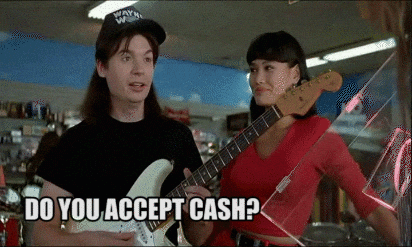The Cash Envelope System
If you’re looking for a practical way to control spending and stick to your budget, the Cash Envelope System might be the perfect solution. This tried-and-true method uses physical cash to manage expenses, making it easier to track spending and avoid overspending. Whether you’re a budgeting beginner or looking for a fresh approach, this guide will walk you through everything you need to know about the Cash Envelope System.
What is the Cash Envelope System?
The Cash Envelope System is a budgeting method where you allocate physical cash into envelopes labeled for specific spending categories. Once an envelope is empty, spending in that category stops until the next budgeting period. By using cash instead of cards, this system makes you more mindful of your spending habits.
Example: If you have $500 budgeted for groceries, you withdraw that amount in cash and place it in an envelope labeled “Groceries.” You use only this cash for grocery shopping throughout the month.
How the Cash Envelope System Works
Step 1: Identify Your Spending Categories
Determine which expenses are best suited for cash management. Common categories include:
- Groceries
- Dining out
- Entertainment
- Clothing
- Miscellaneous discretionary spending
Step 2: Set a Budget for Each Category
Use your overall budget to decide how much cash to allocate for each category. For example:
- Groceries: $300
- Dining Out: $100
- Entertainment: $50
Step 3: Withdraw and Allocate Cash
Withdraw the total amount needed and distribute it into labeled envelopes. Keep the envelopes in a secure place or carry them in a wallet for easy access.
Step 4: Spend Only What’s in the Envelope
When you make a purchase, use cash from the corresponding envelope. Once the envelope is empty, no more spending in that category is allowed until the next budgeting period.
Step 5: Track Your Spending
Keep receipts or jot down expenses on the envelope itself to monitor where your money goes.
Benefits of the Cash Envelope System
- Enhanced Spending Awareness: Handling physical cash makes you more conscious of your spending.
- Debt Prevention: Limits spending to available funds, avoiding reliance on credit cards.
- Simplified Budgeting: Clear visual limits for each category.
- Encourages Discipline: Once the cash is gone, spending stops.
Challenges and Tips for Success
Common Challenges
- Carrying Cash: In today’s digital age, using cash can feel inconvenient.
- Tracking Leftover Cash: Managing leftover funds or ensuring accurate tracking requires diligence.
- Handling Irregular Expenses: Unplanned costs may disrupt your budget.
Tips for Success
- Combine Cash with Digital Tools: Use budgeting apps like Mint or YNAB to track overall expenses while sticking to cash for specific categories.
- Use Secure Envelopes or Wallets: Organize envelopes in a wallet designed for the system.
- Plan for Irregular Expenses: Set up a sinking fund for less frequent costs like holiday gifts or car maintenance.
Digital Alternatives to the Cash Envelope System
If carrying cash isn’t practical for you, consider digital apps that replicate the envelope budgeting method:
- Goodbudget: A virtual envelope system that allows you to allocate funds digitally.
- Qube Money: Combines banking and budgeting by letting you assign money to virtual envelopes for real-time tracking.
Example
Case Study: Lisa uses the Cash Envelope System to manage her discretionary spending. Here’s her monthly allocation:
- Groceries: $300
- Dining Out: $100
- Entertainment: $50
By sticking to her envelopes, Lisa avoids overspending and saves an extra $150 each month, which she uses to build her emergency fund.
Tools and Resources
- Printable Cash Envelope Templates: Download free customizable templates to organize your envelopes.
- Budgeting Apps: Explore digital alternatives like Goodbudget and Qube Money.
- Envelope Wallets: Purchase specially designed wallets for carrying and organizing cash envelopes (available on Etsy or Amazon).
FAQ Section
What happens to leftover cash in an envelope? You can roll it over to the next month, save it for future goals, or reallocate it to another category.
How do I handle irregular expenses with this system? Create a sinking fund for expenses that don’t occur monthly, such as car repairs or holiday gifts.
Is the Cash Envelope System safe in a digital economy? Yes, but you may need to adapt by using a combination of cash and digital tools for convenience.
Call-to-Action
Ready to take control of your spending? Download our Free Printable Cash Envelope Templates and start budgeting today. For more tips, check out our guide on Zero-Based Budgeting or explore The 50/30/20 Rule.
With the Cash Envelope System, you can simplify your finances, curb overspending, and achieve your financial goals. Start now!






